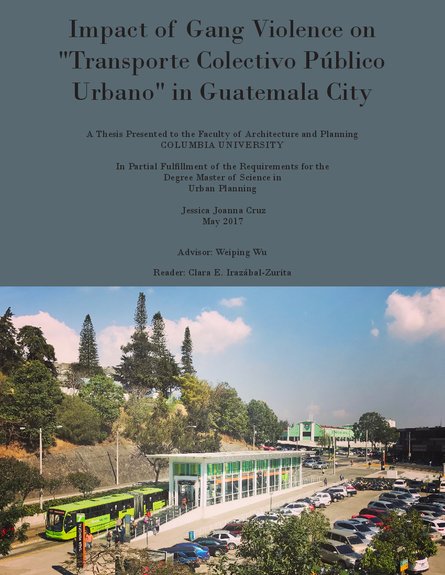
Today, Guatemala is the largest economy in Central America. A recent study completed by the World Bank indicates Guatemala has the potential of moving 160,000 people out of poverty through continued economic growth and expansion (World Bank 2017). However, high rates of inequality, gang violence, and barriers to inclusion, have contributed to the sprawl of the built environment and transportation networks throughout the country. A key aspect of growing sustainably, efficiently, and equitably, for metropolitan areas in Guatemala, specifically Guatemala City, is the improvement of the public transportation network. In recent years, residents of Guatemala City have increased their use of private vehicles, and decreased their usage of public transportation, in efforts to improve their safety against gang violence. In addition, the lack of enforcement of the public private partnership supplying transit in the city, risks the lives of individuals who are most dependent on the system. Between 2010 and January 2017, 1,138 passengers, drivers, and bus assistants were killed throughout the country. The deaths are attributed to increased gang violence, and the targeting of drivers and bus assistants by gang members. As Guatemala continues to move towards a majority urban population, eliminating the barriers to mobility and accessibility of the transportation networks, is crucial to ensuring economic growth and decreased rates of inequality.
Resource collections
- UN Habitat - Urban Response Collection
- Urban Response - Urban Crisis Preparedness and Risk Reduction
- Urban Response Collection - Community Engagement and Social Cohesion
- Urban Response Collection - Economic Recovery
- Urban Response Collection - Environment and Climate Change
- Urban Response Collection - Housing, Land and Property
- Urban Response Collection - Urban Crisis Response, Recovery and Reconstruction
- Urban Response Collection - Urban Resilience